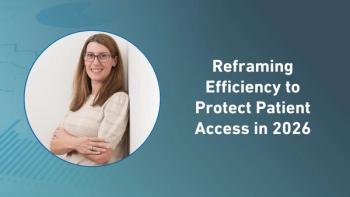
Reproxalap Significantly Reduces Ocular Discomfort in a Phase III Clincal Trial for the Treatment of Dry Eye Disease
Results represent the first positive Phase III clinical trial in a dry eye chamber with a symptom as the primary endpoint.
Results from a Phase III clinical trial demonstrated that Aldeyra Therapeutics’ Reproxalap demonstrated a significantly reduced ocular discomfort, a key symptom of dry eye disease, compared to the vehicle control. According to the company, the trial represented the first to positively represent a dry eye chamber with a symptom as the primary endpoint. The study was conducted in order to meet the FDA’s requirements for a New Drug Application (NDA) resubmission, with Aldeyra anticipating this submission in 2024.1
“To our knowledge, the results announced today represent the first positive Phase 3 clinical trial in a dry eye chamber with a symptom as a primary endpoint, and we believe that the results are supportive of the potential rapid clinical effect of reproxalap on reducing the ocular discomfort associated with dry eye disease,” stated Todd C. Brady, MD, PhD, president, CEO, Aldeyra, in a press release.
In the Phase III trial, participants were given the treatment before and during exposure to a dry eye chamber consistent with the FDA’s dry eye disease draft guidance. The study included 132 patients, with half receiving reproxalap and the other half receiving the vehicle. The primary endpoint of the study was ocular discomfort, an FDA-accepted symptom of dry eye disease, from 80 to 100 minutes in the chamber.
No new safety signals were identified during the study, with reproxalap found to be well tolerated in trial participants. Common adverse events of the trial were reported to be mild and transient instillation site discomfort, consistent with prior trials. Additionally, the drug has been tested in over 2,500 participants, with Aldeyra stating that it has the potential to be a significant treatment option for those suffering from dry eye disease.1
Globally, the prevalence of dry eye disease can range anywhere from 5% to 50%, with the disease being more common in Asian countries. According to 2017 data from the National Health and Wellness Survey, 6.8% of people living in the United States are currently living with dry eye disease, with an increasing prevalence with older age and greater prevalence in women than men. By 2022, statistics suggested a prevalence range of 5.3% to 14.5% in the United States, averaging around 8% total.2
According to Dry Eye Directory, dry eye disease currently costs the United States approximately $55.4 billion to the economy each year, with estimates ranging from 16.7 million and 50.2 million people in the countries having been diagnosed with it. In the past decade, google searches for dry eye disease have doubled.3
“One of the most important steps to treating dry eyes is to educate the person about dry eyes. This is best done at an eye examination. Patients often talk with their Optometrist or Ophthalmologist about some of the reasons they have dry eyes, the treatment options and the long-term prognosis,” reports Dry Eye Directory. “Dry eyes initially is treated by looking at a person’s lifestyle and work routines. This might mean reducing airflow, increasing humidity or tweaking the home or workplace. Other changes such as identifying medication contributors and increasing supplements (e.g. omega-three) can help.”
References
1. Aldeyra Therapeutics Achieves Primary Endpoint in Phase 3 Dry Eye Disease Clinical Trial of Reproxalap. BusinessWire. August 8, 2024. Accessed August 12, 2024. https://www.businesswire.com/news/home/20240808408806/en/
2. Dry eye disease. UpToDate. August 7, 2024. Accessed August 12, 2024. https://www.uptodate.com/contents/dry-eye-disease#:~:text=and%20management%22.)-,EPIDEMIOLOGY,women%20than%20men%20%5B2%5D.
3. Dry Eye Statistics in 2023. Dry Eye Directory. Accessed August 12, 2024. https://dryeyedirectory.com/dry-eye-statistics/#:~:text=Dry%20Eye%20Statistics%2D%20At%20a,%5B1%5D
Newsletter
Stay current in clinical research with Applied Clinical Trials, providing expert insights, regulatory updates, and practical strategies for successful clinical trial design and execution.




